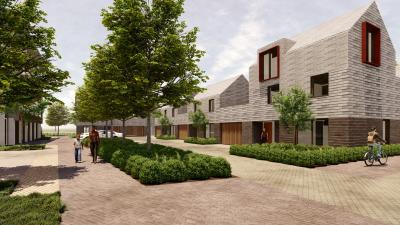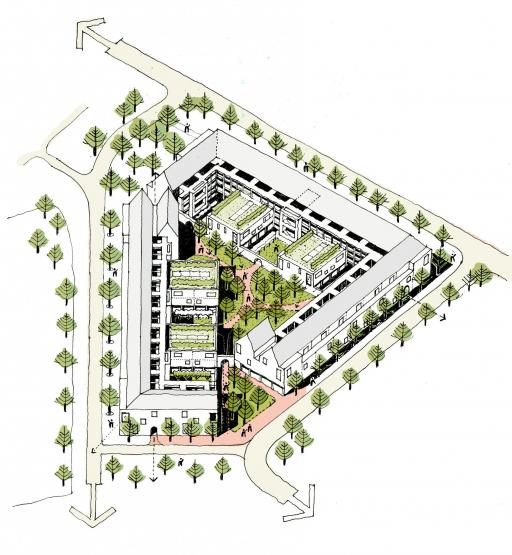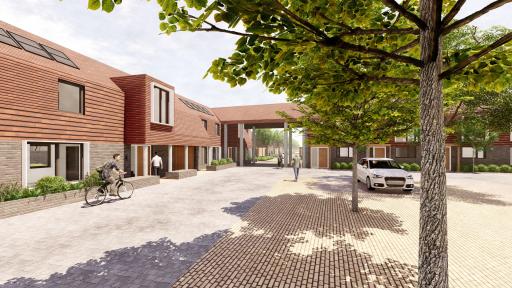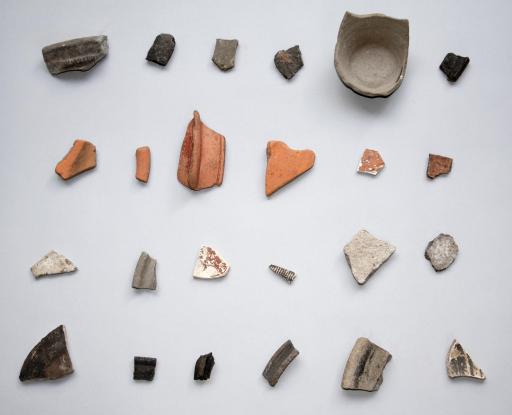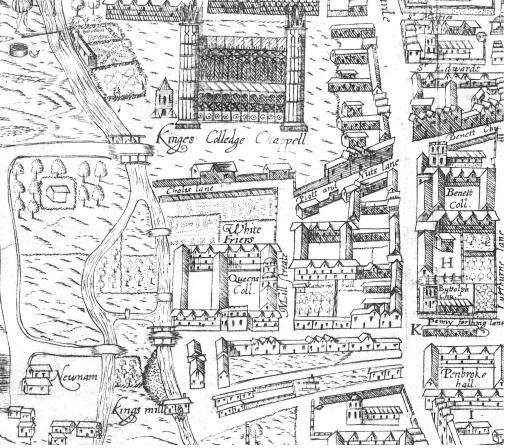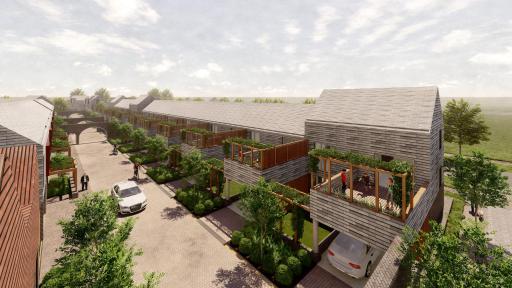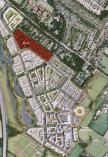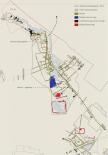The Roman Fields masterplan forms part of the wider University backed North West Cambridge Development which will expand the city and provide sustainable homes for key workers, students and the public.
The site, located to the north of Eddington (the first phase of development), has a rich heritage of Roman and Bronze Age occupation. The Roman field/ lane patterns that have been discovered beneath this section of the masterplan offer an opportunity to create a historic reference or palimpsest that can enrich the new public realm and built form structure.
Inspired by the collegiate courts and the urban framework of Cambridge city centre, the housing is arranged in mews streets, courtyards, and villas. All homes include courtyards, ranging from small houses with captured courts to larger villas with south facing courts. Clusters of homes are framed by arched portals that help to divide the masterplan into smaller community focused spaces that foster neighbourhood cohesion. A wide range of dwelling types catering for different lifestyles are included to appeal to a broad demographic and nurture a varied and sustainable neighbourhood.
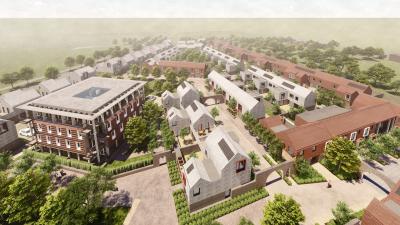
The material palate consists of various hues of natural hung tile; a material synonymous with Cambridge vernacular buildings, which also references the terracotta and clay fragments found in various archaeological digs across North West Cambridge and the Cambridgeshire countryside. The red and grey hues of hung tile are inspired by the geological strata of clays and gault that form under the site and create the tapering topography.
Sustainability has been integrated at every level. The masterplan feeds into the wider North West Cambridge sustainable urban drainage strategy (SUDs) extending the proposed green corridors into the heart of the masterplan. The architecture continues the arcadian language intertwining landscape with built fabric, creating opportunities for productive walled gardens and planted pergolas. The roofscape captures sunlight on south facing photovoltaics and the materials have been selected for their low embodied carbon and durability.
The result is a masterplan that is enriched by layers of contextual understanding of the site, creating a neighbourhood that is distinctively local, vibrant and of a scale sympathetic to the location.
